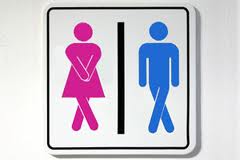 Oral medication for treating a type of incontinence in women is roughly as effective as Botox injections to the bladder, reported researchers who conducted a National Institutes of Health clinical trials network study, with each form of treatment having benefits and limitations.
Oral medication for treating a type of incontinence in women is roughly as effective as Botox injections to the bladder, reported researchers who conducted a National Institutes of Health clinical trials network study, with each form of treatment having benefits and limitations.
After six months, women in both treatment groups said that the average number of daily episodes had declined from about five per day to about 1-2 per day.
In the study, the researchers compared the effectiveness of Botox injections to oral anticholinergic medications for treating urge urinary incontinence in women in nearly 250 women, average age 58. Anticholinergic medications reduce bladder contractions by targeting the bladder muscle through the nervous system. Many women who take anticholinergic medications relate having unpleasant side effects, including constipation, dry mouth and dry eyes.
The proportion of women receiving Botox whose urinary leakage completely went away six months after starting treatment (27 percent) was twice that of the group taking oral medication (13 percent). Women in the Botox group were more likely to experience incomplete bladder emptying or bladder infections, while the women taking the medication were a little more likely to report that they had dry mouth — a common side effect of the medication.
The study focused on treatment for urge urinary incontinence — the unpredictable release of urine shortly after feeling the urge to urinate. Information on urge incontinence as well as other kinds of incontinence is available from the National Institute of Diabetes and Digestive and Kidney Diseases
Women are twice as likely as men to experience urinary incontinence, and older women are more likely to experience it than are younger women. An estimated 15.7 percent of U.S. women experience urinary incontinence. Pregnancy and childbirth, menopause, and the structure of the female urinary tract account for this difference.
The findings appear online in the New England Journal of Medicine.
Urge incontinence results from unpredictable activity of the bladder muscles, the cause of which is often unknown. Botox injections work by relaxing the overactive muscles. In August 2011, the U.S. Food and Drug Administration approved Botox, or onabotulinumtoxinA, for the treatment of urge urinary incontinence when the cause of the overactive bladder is known, and due to spinal cord injury, multiple sclerosis or other nervous system disorders.
OnabotulinumtoxinA is not FDA-approved to treat an overactive bladder without a neurologic cause, even when other therapies have been found to be ineffective.
About the National Institutes of Health (NIH): NIH, the nation's medical research agency, includes 27 Institutes and Centers and is a component of the U.S. Department of Health and Human Services. NIH is the primary federal agency conducting and supporting basic, clinical, and translational medical research, and is investigating the causes, treatments, and cures for both common and rare diseases. For more information about NIH and its programs, visit www.nih.gov.
